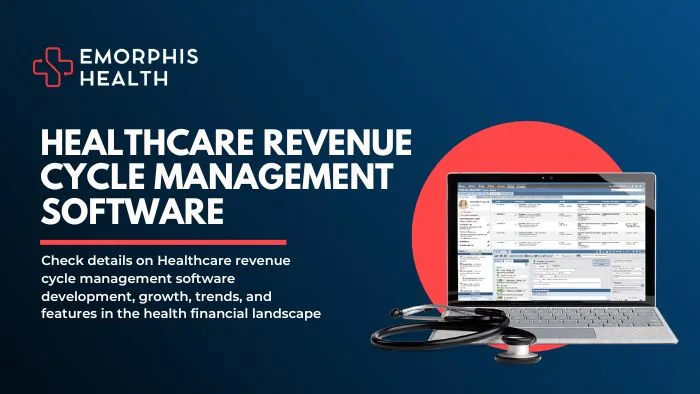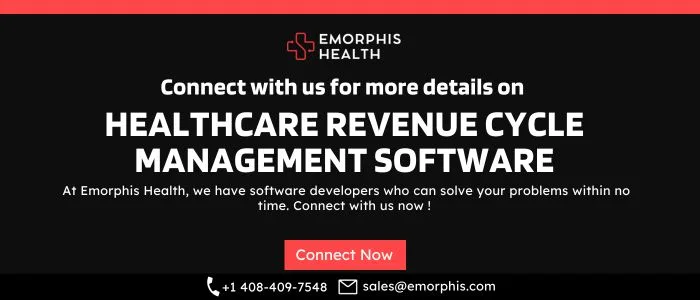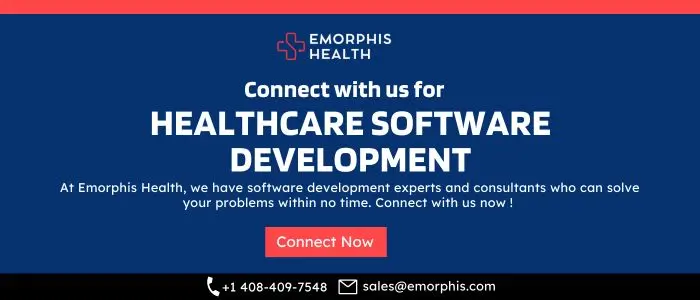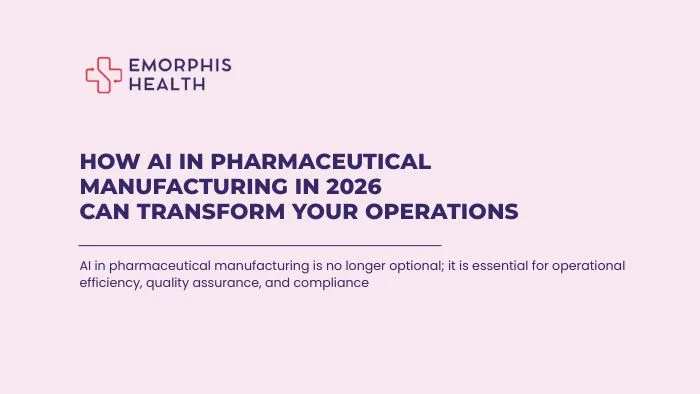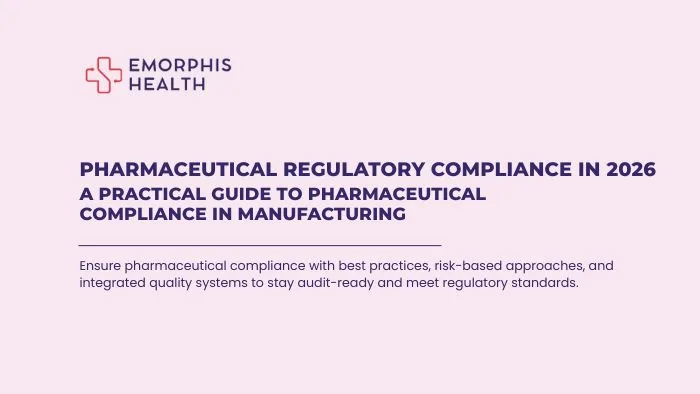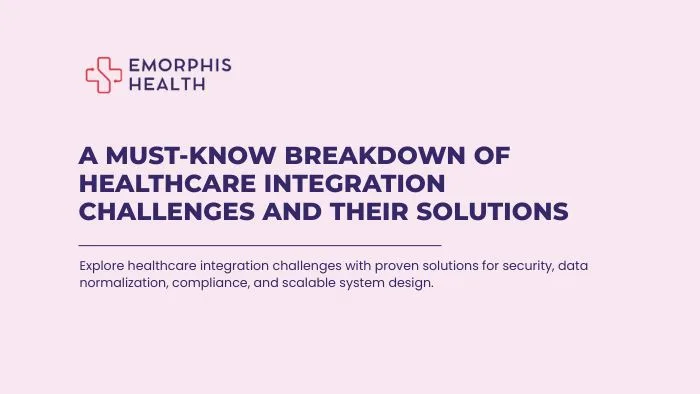Introduction to Healthcare Revenue Cycle Management Software
See Contents
- 1 Introduction to Healthcare Revenue Cycle Management Software
- 2 The Role of Technology in Modern Healthcare Revenue Management
- 3 Key Features of Effective Healthcare Revenue Cycle Management Software
- 4 Future Trends in Healthcare Financial Technology
- 5 Key Points on Healthcare Revenue Cycle Management Software Development
- 6 Conclusion
Healthcare Revenue Cycle Management software is a crucial component in the ever-evolving landscape of healthcare administration. In essence, medical revenue cycle management software solutions refer to a suite of technological tools designed to streamline and optimize the financial aspects of healthcare organizations. From patient registration to the final payment collection, medical revenue cycle management software solutions are integral in managing the entire revenue cycle efficiently.
The healthcare industry is characterized by intricate billing processes, diverse payer models, and stringent regulatory requirements. In such a complex environment, the significance of medical revenue cycle management software solutions cannot be overstated. It serves as a comprehensive solution to enhance the financial performance of healthcare providers by automating and organizing revenue-related tasks.
One of the primary functions of medical revenue cycle management software solutions is to facilitate the seamless flow of financial data throughout the entire healthcare revenue cycle. This includes patient registration, appointment scheduling, insurance verification, coding and billing, claims processing, and payment collection. By automating these processes, healthcare organizations can reduce manual errors, improve accuracy, and expedite reimbursement, ultimately enhancing overall operational efficiency.
Find details on AI software development
Healthcare Revenue Cycle Management Software – Market Overview
The Healthcare Revenue Cycle Management software market is thriving, valued at over USD 140 billion, with a projected CAGR of 12.5% from 2023 to 2032. Technological advancements, including machine learning and artificial intelligence, enhance medical billing efficiency.
In 2021, the global market reached USD 59,720 million, projected to hit USD 139,777 million by 2031 with an 8.8% CAGR, spurred by the COVID-19 pandemic’s impact on the demand for efficient revenue cycle management.
Market growth is driven by factors such as rising regulatory requirements, the pursuit of cost efficiency, and the shift to cloud-based solutions. Cloud-based RCM software, known for scalability and cost-effectiveness, is crucial for streamlined healthcare financial operations.
North America dominates the market, fueled by advanced healthcare infrastructure, substantial expenditure, and stringent regulatory standards. The complexity of healthcare systems, particularly in the United States, fuels the demand for efficient revenue cycle management, boosting the adoption of RCM software solutions.
These trends reflect a resilient and expanding market for healthcare revenue cycle management software, underscoring the growing importance of streamlined financial processes in the healthcare sector.
Evolution of Technology in Healthcare Financial Management
The evolution of technology in healthcare financial management has been marked by a shift from traditional, paper-based systems to sophisticated, integrated software solutions. Historically, healthcare providers relied on manual billing and financial management methods, leading to inefficiencies and delays.
With the advent of electronic health records (EHRs) and the widespread adoption of health information technology, the healthcare industry witnessed a transformative change in how financial data is handled. HRCM software emerged as a response to the growing need for more streamlined and automated revenue cycle processes.
As technology advanced, medical revenue cycle management software solutions evolved to incorporate features such as predictive analytics, machine learning, and real-time reporting. These advancements not only expedited financial workflows but also empowered healthcare organizations to make data-driven decisions, optimize revenue streams, and adapt to changing regulatory landscapes.
The Role of Technology in Modern Healthcare Revenue Management
In the contemporary landscape of healthcare, technology plays a pivotal role in reshaping and optimizing financial processes. Specifically, Healthcare Revenue Cycle Management software solutions stand at the forefront of this transformation, revolutionizing how healthcare providers manage their revenue streams. This shift towards advanced technologies brings about numerous benefits for both healthcare organizations and patients.
-
Streamlining Financial Processes
Medical revenue cycle management software solutions automate and streamline various financial processes within the healthcare revenue cycle. From patient registration to claims processing and payment collection, automation reduces manual errors, accelerates workflows, and ensures the accuracy of financial transactions. This efficiency not only saves time but also enhances the overall financial performance of healthcare providers.
-
Enhanced Revenue Collection
The implementation of HRCM software facilitates the timely and accurate submission of insurance claims, leading to quicker reimbursement. Automated billing and coding processes improve the accuracy of claims, reducing the likelihood of denials and delays. This, in turn, accelerates revenue collection, providing healthcare organizations with a more predictable and stable cash flow.
-
Improved Patient Experience
Advanced technologies in healthcare financial management contribute to a more transparent and patient-friendly billing experience. Patients can access and review their financial information, understand costs, and receive accurate estimates of out-of-pocket expenses. This transparency fosters trust and engagement, contributing to an improved overall patient experience.
-
Compliance and Risk Mitigation
HRCM software is designed to adapt to ever-changing healthcare regulations and compliance standards. By automating compliance checks and ensuring adherence to billing regulations, healthcare providers reduce the risk of audits, penalties, and legal issues. This not only safeguards the financial health of the organization but also enhances trust and credibility.
-
Data-Driven Decision-Making
Technology enables healthcare providers to harness the power of data analytics within revenue management. HRCM software can generate real-time reports and predictive analytics, offering valuable insights into financial trends, billing patterns, and revenue forecasts. Informed by data, organizations can make strategic decisions to optimize their revenue cycle and financial performance.
-
Cost Reduction and Efficiency
The adoption of technology, particularly HRCM software, leads to cost reductions associated with manual processes, paperwork, and administrative overhead. By automating routine tasks, healthcare organizations can allocate resources more efficiently, redirecting manpower to tasks that require human expertise, such as patient care.
-
Increased Financial Visibility
Modern HRCM software provides healthcare organizations with comprehensive financial visibility. From tracking claims status to monitoring reimbursement patterns, providers gain real-time insights into their financial health. This visibility allows for proactive decision-making, identifying areas for improvement and optimizing revenue generation.
Key Features of Effective Healthcare Revenue Cycle Management Software
a. Automated Billing
Automated billing is a fundamental feature of HRCM software that streamlines the billing process, reducing manual errors and accelerating the generation and submission of accurate claims.
Contribution to Financial Efficiency and Accuracy – By automating billing tasks, the software minimizes the risk of errors associated with manual data entry. This results in faster claim submission, quicker reimbursement, and improved accuracy in financial transactions, ultimately enhancing the overall financial efficiency of healthcare providers.
b. Electronic Health Record (EHR) Integration
Integration with Electronic Health Records (EHRs) allows seamless sharing of patient information between clinical and financial systems. This ensures that billing and coding are based on up-to-date and accurate patient data.
Contribution to Financial Efficiency and Accuracy – EHR integration eliminates the need for duplicate data entry and promotes consistency between clinical and financial records. This integration enhances accuracy in billing, coding, and patient information, thereby improving the efficiency of revenue cycle processes.
c. Claim Processing and Management
This feature involves the end-to-end management of insurance claims, from creation and submission to tracking and resolution. It includes tools for identifying and resolving claim denials.
Contribution to Financial Efficiency and Accuracy – Efficient claim processing reduces the time between service delivery and reimbursement. Advanced claim management tools help identify and address issues promptly, reducing claim denials and increasing the accuracy of claims submitted, ultimately improving the financial health of healthcare organizations.
d. Compliance Tracking and Reporting
Compliance tracking features monitor changes in healthcare regulations and ensure that billing practices adhere to industry standards and legal requirements.
Contribution to Financial Efficiency and Accuracy – By automating compliance checks, the software helps healthcare organizations avoid penalties and legal issues associated with non-compliance. This feature enhances accuracy in billing and ensures that the organization operates within regulatory frameworks, contributing to financial stability.
e. Patient Financial Engagement Tools
Patient financial engagement tools provide patients with transparent information about their financial responsibilities, including cost estimates, billing statements, and payment options.
Contribution to Financial Efficiency and Accuracy – Improved patient financial engagement leads to better communication and understanding of financial obligations. This transparency reduces the likelihood of billing disputes and increases the likelihood of timely payments, contributing to overall financial efficiency.
f. Real-Time Analytics and Reporting
Real-time analytics and reporting features provide healthcare organizations with insights into key financial metrics, trends, and performance indicators.
Contribution to Financial Efficiency and Accuracy – Data-driven decision-making is enhanced through real-time analytics. Organizations can identify areas for improvement, optimize revenue cycles, and proactively address financial challenges, leading to improved financial accuracy and efficiency.
Future Trends in Healthcare Financial Technology
1. Artificial Intelligence (AI) and Machine Learning (ML)
The integration of AI and ML technologies is expected to play a pivotal role in healthcare financial management. These technologies will enable predictive analytics for revenue forecasting, fraud detection, and identification of optimization opportunities within the revenue cycle.
2. Blockchain Technology
Blockchain has the potential to revolutionize healthcare financial transactions. Through decentralized and secure ledgers, blockchain can enhance the transparency and traceability of financial data, reducing fraud, improving billing accuracy, and streamlining transactions between different stakeholders.
3. Value-Based Care Solutions
The shift towards value-based care models is likely to drive the development of financial technologies that align reimbursement with patient outcomes. Advanced analytics and payment models will be designed to incentivize providers to deliver high-quality, cost-effective care.
4. Telehealth Financial Integration
As telehealth continues to expand, there will be a growing need for financial technologies that seamlessly integrate with telehealth platforms. This includes billing processes, insurance verification, and payment collection for virtual healthcare services.
5. Consumer Financial Engagement Tools
Future healthcare financial technology will focus on empowering consumers with tools for better financial engagement. This includes user-friendly interfaces for viewing and understanding medical bills, estimating out-of-pocket costs, and flexible payment options to improve the overall patient financial experience.
6. Interoperability and Integration Standards
The industry will witness increased efforts to establish interoperability and integration standards for healthcare financial technologies. Seamless data exchange between different systems, including EHRs and billing platforms, will become a priority for reducing administrative complexities.
7. Cloud-Based Financial Management Systems
Cloud-based financial management systems will become more prevalent, offering scalability, flexibility, and enhanced collaboration. This shift will enable healthcare organizations to access real-time financial data securely, supporting more agile decision-making processes.
8. Cybersecurity Enhancements
With the increasing digitization of financial processes, there will be a heightened focus on cybersecurity measures. Future technologies will incorporate advanced encryption, biometric authentication, and robust cybersecurity protocols to protect sensitive financial and patient information.
9. Data Analytics for Revenue Optimization
Advanced data analytics tools will be utilized to identify patterns, trends, and potential areas for revenue optimization. Machine learning algorithms will analyze vast datasets to offer actionable insights, allowing healthcare organizations to make data-driven decisions for financial success.
10. Regulatory Compliance Automation
Automation technologies will be leveraged to enhance regulatory compliance within healthcare financial management. Smart algorithms and automated compliance checks will help organizations stay up-to-date with changing regulations, reducing the risk of non-compliance and associated penalties.
11. Personalized Financial Wellness Solutions
Financial technologies will evolve to offer personalized financial wellness solutions for healthcare consumers. This includes tools to manage healthcare savings accounts, plan for medical expenses, and optimize insurance coverage based on individual health needs.
Key Points on Healthcare Revenue Cycle Management Software Development
Integration of Advanced Technologies
Incorporate cutting-edge technologies like AI and machine learning for enhanced accuracy and predictive analytics in Healthcare Revenue Cycle Management Software Development.
Streamlining Financial Workflows
Tailor solutions to streamline billing, coding, and claims processing, optimizing financial workflows for healthcare providers with Healthcare Revenue Cycle Management Software Development.
Data Security and Compliance
Prioritize security measures, ensuring HIPAA compliance to safeguard sensitive patient data throughout the Healthcare Revenue Cycle Management Software Development process.
Agile and Scalable Solutions
Develop agile, scalable, and interoperable software to meet the evolving demands of the healthcare industry in Medical revenue cycle management software solutions Development.
Seamless System Integration
Ensure seamless integration with existing healthcare systems to maximize efficiency and minimize disruptions in Healthcare Revenue Cycle Management Software Development.
Predictive Analytics for Financial Optimization
Utilize predictive analytics to optimize financial processes, enhancing revenue capture and reducing billing errors in Healthcare Revenue Cycle Management Software Development.
User-Friendly Interfaces
Design user-friendly interfaces to facilitate ease of use for healthcare professionals, contributing to overall system adoption in Medical revenue cycle management software solutions Development.
Continuous Technological Advancements
Stay abreast of technological advancements to ensure that the developed software remains innovative and adaptable to industry changes in Healthcare Revenue Cycle Management Software Development.
Enhanced Patient Care
Recognize the role of Healthcare Revenue Cycle Management Software in improving patient care by ensuring efficient financial processes.
Comprehensive Training Programs
Implement comprehensive training programs for end-users to maximize the benefits of the developed software and encourage adoption in Healthcare Revenue Cycle Management Software Development.
Real-Time Analytics for Informed Decision-Making
Implement real-time analytics in Medical revenue cycle management software solutions development to provide actionable insights, aiding informed decision-making for financial optimization.
Automated Billing Processes
Integrate automated billing processes to minimize errors and accelerate claims submission, a crucial aspect of Healthcare Revenue Cycle Management Software Development.
Patient-Centric Financial Engagement
Develop patient-centric financial engagement tools to enhance transparency, allowing patients to understand costs and contribute positively to Healthcare Revenue Cycle Management Software Development.
Regulatory Adherence and Compliance Automation
Embed features for regulatory adherence and compliance automation within the software, ensuring that it aligns seamlessly with evolving healthcare regulations during medical revenue cycle management software solutions development.
Cost-Efficient Cloud-Based Solutions
Emphasize the development of cost-efficient cloud-based solutions, providing scalability and accessibility critical for the smooth functioning of healthcare financial operations in Healthcare Revenue Cycle Management Software Development.
Customization Without Over-Complexity
Strive for customization in Healthcare Revenue Cycle Management Software Development while avoiding over-complexity, ensuring that the software aligns precisely with organizational needs without compromising user experience.
Mobile Accessibility and Telehealth Integration
Integrate mobile accessibility and support telehealth solutions, recognizing their growing importance and relevance in the modern healthcare landscape during Healthcare Revenue Cycle Management Software Development.
Vendor Support and Continuous Improvement
Prioritize vendor support and establish mechanisms for continuous improvement, recognizing that support services are crucial during implementation and throughout the lifecycle of medical revenue cycle management software solutions development.
Strategic Adoption of Value-Based Care Models
Consider the strategic adoption of value-based care models during Healthcare Revenue Cycle Management Software Development. Some of them are aligning reimbursement structures with patient outcomes for sustainable financial success.
Global Relevance with Regional Insights
Ensure global relevance with regional insights. Moreover, recognizing regional variations and adapting Healthcare Revenue Cycle Management Software Development strategies for diverse healthcare environments.
Find details on AI software development
Conclusion
In the ever-evolving landscape of healthcare, adopting or upgrading Healthcare Revenue Cycle Management software is paramount. The integration of advanced technologies, such as AI, blockchain, and enhanced cybersecurity measures, positions healthcare organizations to navigate complexities. Also, streamline financial processes, and ensure compliance with evolving regulations. These advancements not only enhance revenue capture, reduce errors, and accelerate payment cycles. Also contributes to the overall financial health and sustainability of healthcare providers.
As healthcare continues to embrace digital transformation, organizations must consider the adoption or upgrading of HRCM software. This strategic move can lead to improved financial outcomes, increased operational efficiency, and enhanced patient experiences. By leveraging the latest advancements in healthcare financial technology. Moreover, the organizations can position themselves for success in the dynamic and data-driven healthcare landscape. It’s an investment in the future, aligning to provide high-quality care while maintaining financial stability.
Connect with Emorphis Health Now for HRCM software.

